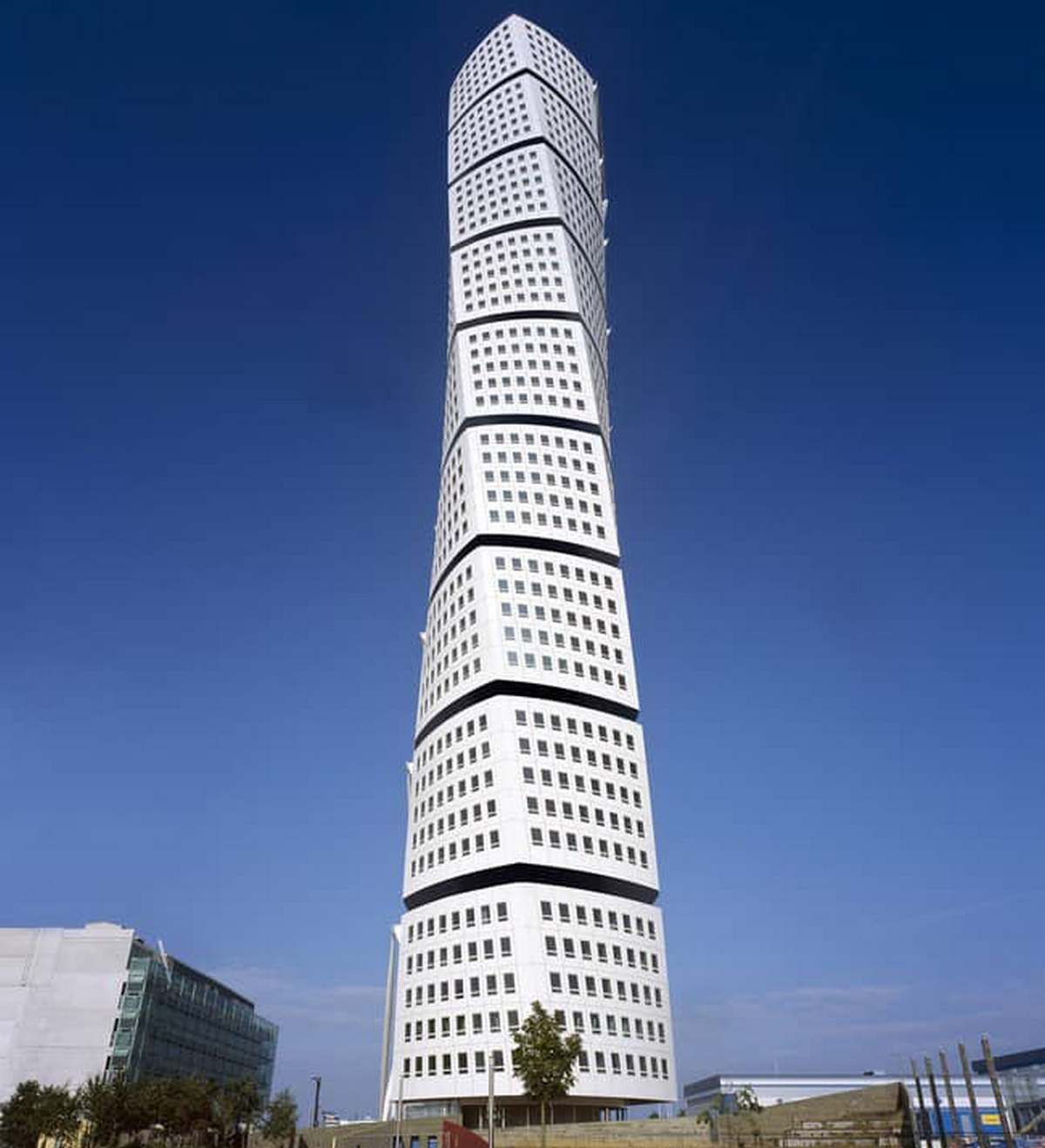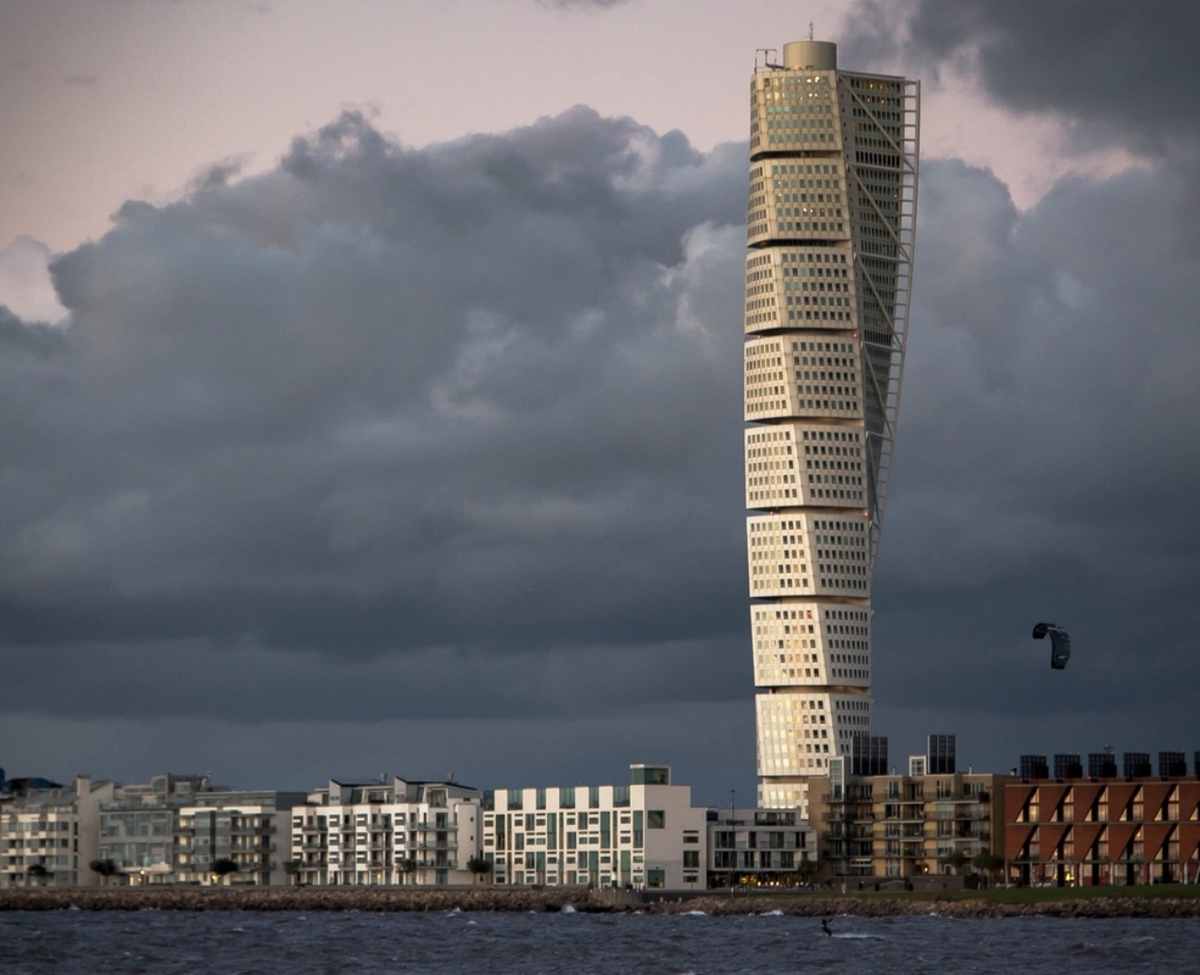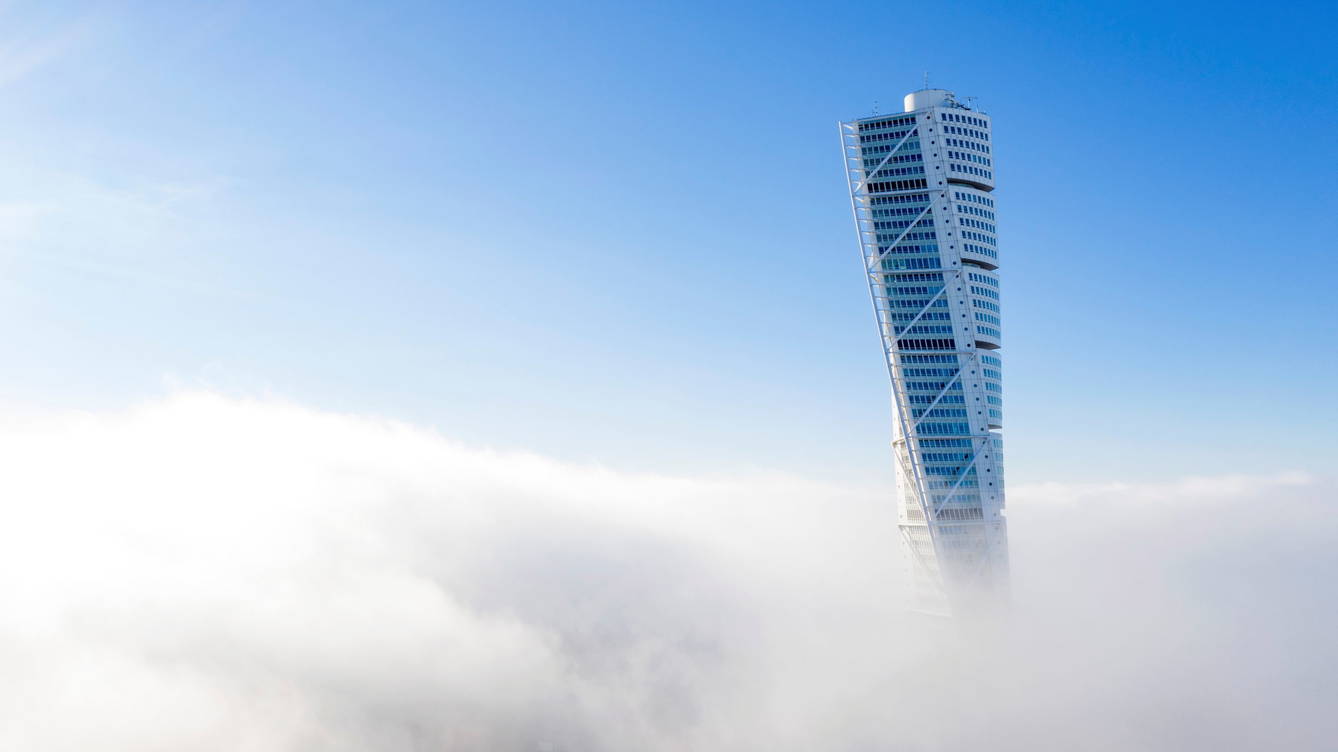About ten years ago, Malmö from an industrial city began to take shape as a city center, where there is no shortage of content, events and entertainment. The pearl of the revived city in western Sweden is the construction of a futuristic building that revolves around its axis – the world’s first self-supporting skyscraper.
When it opened in 2005, the 190-meter curved building was the tallest skyscraper in Scandinavia, the tallest residential building in the EU and the second tallest in Europe.

The Turing Torso, designed by Spanish architect Santiago Calatrava and located in the Swedish city of Malmo, was awarded the CTBUH in Chicago (USA).
The Spanish architect Santiago Calatrava was inspired by a marble sculpture of a rotating torso, which also inspired the name of the skyscraper. The building rotates 90 degrees around its axis, and the Spanish architect drew this idea from the movement of the human body.

The 57-storey building is divided into nine sections that rotate around its axis towards the top. The pentagonal floors revolve around a core in the form of a concrete pipe supported by a steel frame.
The ridge of the skyscraper rotates 90 degrees from the first floor to the top. Part of the area is allocated for office space, the rest – for 147 luxury apartments – from one to a maximum of five on each floor.
Turing Torso is one of the pioneers in self-sustaining architecture, which is why it is gaining more and more recognition. The energy consumed in the apartments comes from renewable sources – sun, water and wind, as well as from organic waste, which residents dispose of in a special place. The skyscraper absorbs 100% of the energy that residents use for heating. All safety systems have backup power, including elevators and lighting, and given the dual system, it is unlikely that anyone will be left without water just when they need to take a shower and go to work.
The construction of the building cost 220 million dollars. It is partially shrouded in fog and offers stunning views of the Sund between Sweden and Denmark.
Source: BGNES

